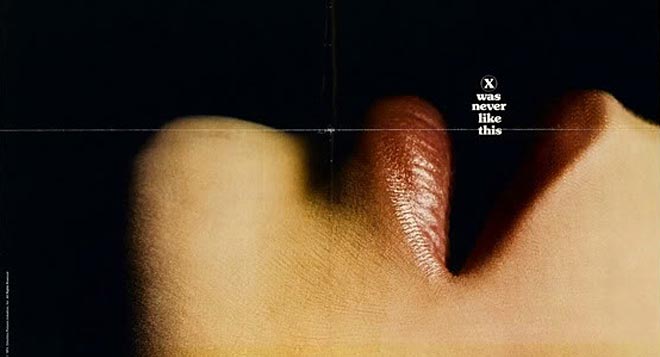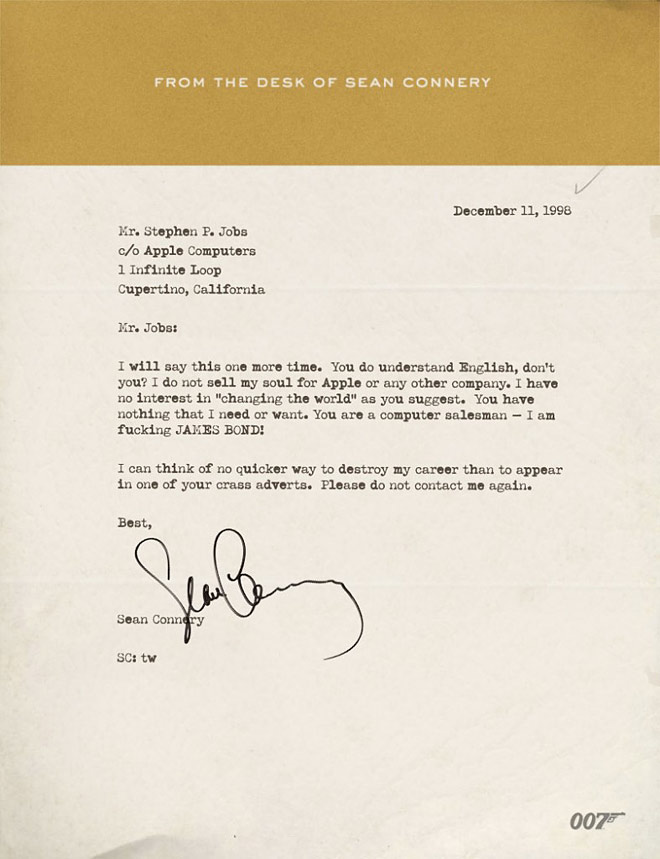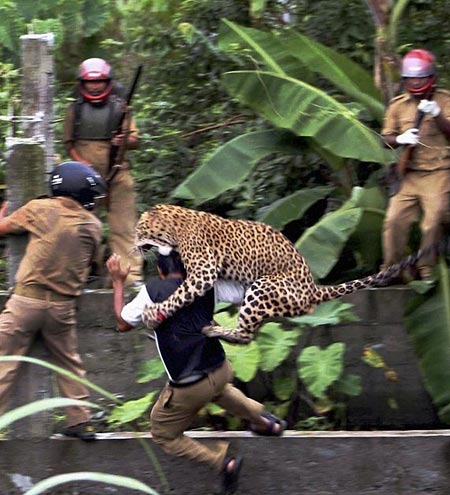‘Since men in their endeavors behave, on the whole, not just instinctively, like the brutes, nor yet like rational citizens of the world according to some agreed-on plan, no history of man conceived according to a plan seems to be possible, as it might be possible to have such a history of bees or beavers.’ –Kant
For someone who remembers the old days, the food is the most startling thing about modern England. English food used to be deservedly famous for its awfulness–greasy fish and chips, gelatinous pork pies, and dishwater coffee. Now it is not only easy to do much better, but traditionally terrible English meals have even become hard to find. What happened?
Maybe the first question is how English cooking got to be so bad in the first place. A good guess is that the country’s early industrialization and urbanization was the culprit. Millions of people moved rapidly off the land and away from access to traditional ingredients. Worse, they did so at a time when the technology of urban food supply was still primitive: Victorian London already had well over a million people, but most of its food came in by horse-drawn barge. And so ordinary people, and even the middle classes, were forced into a cuisine based on canned goods (mushy peas), preserved meats (hence those pies), and root vegetables that didn’t need refrigeration (e.g. potatoes, which explain the chips).
But why did the food stay so bad after refrigerated railroad cars and ships, frozen foods (better than canned, anyway), and eventually air-freight deliveries of fresh fish and vegetables had become available? Now we’re talking about economics–and about the limits of conventional economic theory. For the answer is surely that by the time it became possible for urban Britons to eat decently, they no longer knew the difference. The appreciation of good food is, quite literally, an acquired taste–but because your typical Englishman, circa, say, 1975, had never had a really good meal, he didn’t demand one.
‘Impatience asks for the impossible, wants to reach the goal without the means of getting there.’ –Hegel
In the early 1970s, NASA sent two spacecraft on a roller coaster ride towards the outer Solar System. Pioneer 10 and 11 travelled past Jupiter (and Saturn in Pioneer 11’s case) and are now heading out into interstellar space.
But in 2002, physicists at NASA’s Jet Propulsion Laboratory in Pasadena, noticed a puzzling phenomenon. The spacecraft are slowing down. Nobody knows why but NASA analysed 11 years of tracking data for Pioneer 10 and 3 years for Pioneer 11 to prove it.
This deceleration, called “the Pioneer anomaly,” has become one of the biggest problems in astrophysics. One idea is that gravity is different at theses distances (Pioneers 10 and 11 are now at 30 and 70 AU [Astronomical Units]). That would be the most exciting conclusion.
But before astrophysicists can accept this, other more mundane explanations have to be ruled out. Chief among these is the possibility that the deceleration is caused by heat from the spacecraft’s radioactive batteries, which may radiate more in one direction than another.
‘The future belongs to those with the longest memory.’ –Nietzsche
In a study published today, the University of Helsinki’s Tatu Westling points out a surprising strong correlation between a country’s GDP growth rate and average penile length. (…)
Countries that averaged smaller penis sizes grew at a faster rate than their larger counterparts between 1960 and 1985. Every centimeter increase in penis size accounted for a 5 to 7 percent reduction in economic growth. The study also showed that overall GDP was at its highest in countries with average-sized penises with GDP falling at the extremes of penis length.
The world in whatever-the-next-year-is
Falsifiability or refutability is the logical possibility that an assertion can be contradicted by an observation or the outcome of a physical experiment. That something is “falsifiable” does not mean it is false; rather, that if it is false, then some observation or experiment will produce a reproducible result that is in conflict with it.
For example, the claim “atoms do exist” is unfalsifiable: Even if all observations made so far did not produce an atom, it is still possible that the next observation does. In the same way, “all men are mortal” is unfalsifiable: even if someone is observed who has not died so far, he could still die.
By contrast, “all men are immortal,” is falsifiable by the presentation of just one dead man. Not all statements that are falsifiable in principle are falsifiable in practice. For example, “it will be raining here in one million years” is theoretically falsifiable, but not practically so.
The concept was made popular by Karl Popper, who, in his philosophical criticism of the popular positivist view of the scientific method, concluded that a hypothesis, proposition, or theory talks about the observable only if it is falsifiable. Popper however stressed that unfalsifiable statements are still important in science, and are often implied by falsifiable theories. For example, while “all men are mortal” is unfalsifiable, it is a logical consequence of the falsifiable theory that “every man dies before he reaches the age of 150 years.”
There’s only love, and there ain’t no replacement

Human interactions often provide people with considerable social support, but can pets also fulfill one’s social needs? Although there is correlational evidence that pets may help individuals facing significant life stressors, little is known about the well-being benefits of pets for everyday people.
Study 1 found in a community sample that pet owners fared better on several well-being (e.g., greater self-esteem, more exercise) and individual-difference (e.g., greater conscientiousness, less fearful attachment) measures.
Study 2 assessed a different community sample and found that owners enjoyed better well-being when their pets fulfilled social needs better, and the support that pets provided complemented rather than competed with human sources.
Finally, Study 3 brought pet owners into the laboratory and experimentally demonstrated the ability of pets to stave off negativity caused by social rejection.
In summary, pets can serve as important sources of social support, providing many positive psychological and physical benefits for their owners.
photo { Andre Kertesz, Study of People and Shadows, 1928 | more photos }
My stomach–is surely an eagle’s stomach?

This was in Japan, so the major breakfast staples were white rice and white bread. (…)
The kids who had rice for breakfast showed higher grey matter volumes than those who had bread. The authors of the study related this to cognitive performance, and said that the rice group had higher IQ scores and POI scores compared to the bread group. (…)
I’ve got a few issues with this paper.
photo { Thatcher Keats }
Cuz they see me in the hood, poppin wheelies on my Kawasaki
The Wall Street Journal says Apple is thinking of making a bid for Hulu and Seattlepi.com says Microsoft’s is no longer interested, which leaves Amazon, Apple, Google, Yahoo, and any unnamed parties. I can’t think of any unnamed parties, by the way, so I’m guessing one of these will walk with Hulu, which went into play a couple weeks ago following an unsolicited (and still unidentified) bid.
Of course the three big network owners of Hulu will guarantee five years of continued program access with the first two years exclusive. That’s because they have no money in Hulu and each stands to walk with $600+ million from the sale, but only if there is a sale. Without such an exclusivity period there will be no sale and no $600+ million. None of these networks can buy out the others for antitrust reasons so the “networks might balk” story is just to sell newspapers (or electrons). Hulu will be sold.
Another suitcase in another hall
Traditionally, nostalgia has been conceptualized as a medical disease and a psychiatric disorder. Instead, we argue that nostalgia is a predominantly positive, self-relevant, and social emotion serving key psychological functions. Nostalgic narratives reflect more positive than negative affect, feature the self as the protagonist, and are embedded in a social context. Nostalgia is triggered by dysphoric states such as negative mood and loneliness. Finally, nostalgia generates positive affect, increases self-esteem, fosters social connectedness, and alleviates existential threat.
{ IngentaConnect }
Some say I’m paranoid I say I’m careful how I choose my friends
University of Minnesota Medical School and College of Biological Sciences researchers have made a key discovery showing that male sex must be maintained throughout life.
The research team, led by Drs. David Zarkower and Vivian Bardwell of the U of M Department of Genetics, Cell Biology and Development, found that removing an important male development gene, called Dmrt1, causes male cells in mouse testis to become female cells.
In mammals, sex chromosomes (XX in female, XY in male) determine the future sex of the animal during embryonic development by establishing whether the gonads will become testes or ovaries.
“Scientists have long assumed that once the sex determination decision is made in the embryo, it’s final,” Zarkower said. “We have now discovered that when Dmrt1 is lost in mouse testes – even in adults – many male cells become female cells and the testes show signs of becoming more like ovaries.”
‘The force of mind is only as great as its expression; its depth only as deep as its power to expand and lose itself.’ –Hegel

The concept that the gut and the brain are closely connected, and that this interaction plays an important part not only in gastrointestinal function but also in certain feeling states and in intuitive decision making, is deeply rooted in our language.
Recent neurobiological insights into this gut–brain crosstalk have revealed a complex, bidirectional communication system that not only ensures the proper maintenance of gastrointestinal homeostasis and digestion but is likely to have multiple effects on affect, motivation and higher cognitive functions, including intuitive decision making.
‘The master is himself an animal, and needs a master.’ –Kant

Preface to Kant’s Critique of Pure Reason, written by J. M. D. Meiklejohn, the translator:
A previous translation of the Kritik exists, which, had it been satisfactory, would have dispensed with the present. But the translator had, evidently, no very extensive acquaintance with the German language, and still less with his subject. A translator ought to be an interpreting intellect between the author and the reader; but, in the present case, the only interpreting medium has been the dictionary.
Indeed, Kant’s fate in this country has been a very hard one. Misunderstood by the ablest philosophers of the time, illustrated, explained, or translated by the most incompetent,— it has been his lot to be either unappreciated, misapprehended, or entirely neglected.
photo { Aaron Wojack }
‘All this will become apparent.’ –Mallarmé

Ron Jude: emmett is a book that brings form to a selection of my old, random photographs. (…) The heart of the project has to do with ideas about existence and the past. It’s structured to echo how we try to piece together coherent narratives through fragments of memory. (…)
Ed Panar: To me Same Difference is sort of an anti-project. I wanted to see what happened if you forgot about the rules, or never knew them in the first place. When you start noticing your own ‘rules’ or, habits of working, things start to become ambiguous pretty quickly. Why do we prefer doing things one way to another? What if we were to discover the basis for our strategies was arbitrary? If these pictures aren’t connected, can that be a point of connection? Photographs are so insanely open anyway. Even in the most constrained situations they will always be about more than the author was aware of in the moment.
{ Conversation between Ed Panar and Ron Jude | Ahorn |Continue reading }
photo { Ron Jude }
And the little woman, whom we call hysterical, alone and unhappy, isn’t she still a riddle for us?
Häxan (English title: The Witches or Witchcraft Through The Ages) is a 1922 Swedish/Danish silent film written and directed by Benjamin Christensen.
Based partly on Christensen’s study of the Malleus Maleficarum, a 15th century German guide for inquisitors, Häxan is a study of how superstition and the misunderstanding of diseases and mental illness could lead to the hysteria of the witch-hunts.
The film was made as a documentary but contains dramatized sequences that are comparable to horror films. With Christensen’s meticulous recreation of medieval scenes and the lengthy production period, the film was the most expensive Scandinavian silent film ever made, costing nearly two million Swedish krona. Although it won acclaim in Denmark and Sweden, the film was banned in the United States and heavily censored in other countries for what were considered at that time graphic depictions of torture, nudity, and sexual perversion.
Breathe the air and feel the air

Despite persistent urban myths to the contrary, chewing gum is, technically speaking, edible. However, doctors do agree that it is not usually wise to swallow it, due to the risk of “gum-based gastrointestinal blockages.” Given that in 2005, Americans chewed, on average, 160-180 pieces or about 1.8 lbs of gum per person, per year, with relatively few swallowing incidents, the resulting post-masticatory waste probably adds up to more than 250,000 tons annually.
Inevitably, disposing of this sticky mass poses some challenges. (…) Discarded chewing gum debris forms the dominant decoration of the urban floor.
‘There is always something ridiculous about the emotion of people whom one has ceased to love.’ –Oscar Wilde
The next time you feel angry at a friend who has let you down, or grateful toward one whose generosity has surprised you, consider this: you may really be bargaining for better treatment from that person in the future. According to a controversial new theory, our emotions have evolved as tools to manipulate others into cooperating with us.
Until now, most psychologists have viewed anger as a way to signal your displeasure when another person does you harm. Similarly, gratitude has been seen as a signal of pleasure when someone does you a favour. In both cases, emotions are seen as short-term reactions to an immediate benefit or cost.
But it’s more cunning than that, says John Tooby, an evolutionary psychologist at the University of California, Santa Barbara. Anger, he says, has as much to do with cooperation as with conflict, and emotions are used to coerce others into cooperating in the long term. (…)
All this suggests that anger and gratitude – and perhaps other emotions, too – may be tools for turning up a partner’s mental cooperation control dial.
‘Quand les hommes ne peuvent changer les choses, ils changent les mots.’ –Jean Jaurès

A few weeks ago, a woman asked me for advice about her teenage daughter. “She wants to be a writer,” the mother said. “What should we be doing?” (…)
First of all, let her be bored. Let her have long afternoons with absolutely nothing to do. (…)
Let her be lonely. Let her believe that no one in the world truly understands her. Give her the freedom to fall in love with the wrong person, to lose her heart, to have it smashed and abused and broken.
related { Weird Writing Habits of Famous Authors. }
photo { Thatcher Keats }
The face forgives the mirror
Let’s try something for a second: Why don’t you think back on the story of your life. While you are thinking back, try to remember why you got to the job you did, the city you now live in, the neighborhood, the relationships, etc. Most likely you–and most people for that matter–took a long winding road to where you are now. It’s also likely that you can pinpoint a few critical decisions you made in the past that have really shaped who you are today, and what you did to get here.
We often construct these life narratives. (…) How true are these narratives really? Do we really know the two or three critical points in our lives that changed everything and made us the people we are today? Psychological science says no. (…)
Nisbett and Wilson concluded, based on this research, that we have strong motivations for prediction and control of our social environments. That is, we’re thinking creatures who want to know how stuff works, and as such, we are constantly constructing theories that could plausibly explain what is happening in our environments. The reality though is that these theories are never really tested or confirmed, and so they are often fabrications–based on our own beliefs about how the world works rather than on how the world actually works (which may be more chaotic than we’d like to admit).















